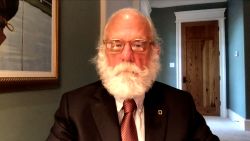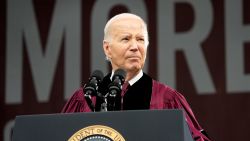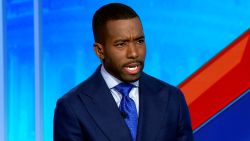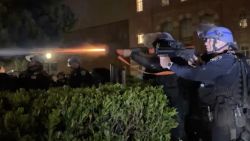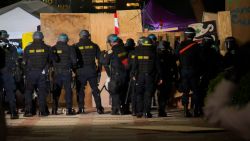Hours before President Donald Trump was impeached for his role in inciting last week’s deadly attack, several lawmakers described the rioters as White supremacists.
“Let us be clear, this was a domestic terror attack perpetrated by riotist mobs of White supremacists, armed equipped and many skilled in police and military tactics who came to overturn an election in which their candidate Trump lost,” Rep. Joyce Beatty of Ohio and chair of the Congressional Black Caucus said in the group’s hearing.
During the impeachment debate Wednesday to excoriate Trump, Rep. Cori Bush of Missouri, who was a veteran BLM activist before becoming a legislator, called the President “White supremacist in chief.”
“Madam Speaker, St. Louis and I rise in support of the article of impeachment against Donald J Trump. If we fail to remove a White supremacist President who incited a white supremacist insurrection, it’s communities like Missouri’s First District that suffer the most,” Bush said during her speech.
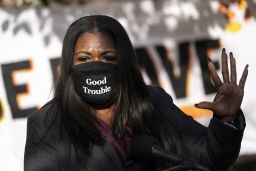
Rioters stormed the US Capitol building last week, unleashing a wave of comparisons to last year’s Black Lives Matter protests. The difference in police response was striking and there’s more that sets them apart.
People marched by the thousands in both after believing that a wrong had been done to them. The calls for racial justice across America over the summer were backed by the deaths of George Floyd, Breonna Taylor and the pain of following generations of anti-Blackness sentiment. Unlike BLM protests, the insurrection at the Capitol was triggered by lies and deeply rooted racist stereotypes, experts say.
Convinced that the presidential election was stolen, rioters touted themselves as “patriots” and repeatedly chanted “USA, USA” while vandalizing and destroying the building at the heart of America’s democracy. Trump, who has embraced dog whistle tactics such as calling Mexicans “rapists” and called the words Black Lives Matter a “symbol of hate,” incited them.
“Once something like that feels true, you can’t dissuade them with the facts,” said Ian Haney López, the author of “Dog Whistle Politics: How Coded Racial Appeals Have Reinvented Racism and Wrecked the Middle Class.”
Here’s a look what’s driven the Black Lives Matter movement for nearly a decade and why Trump supporters broke into the Capitol:
False and debunked claims drew thousands to the Capitol

After weeks of hearing false claims that the presidential election was rigged, Trump supporters flocked to Washington to fight against the ceremonial counting of the electoral votes that would confirm President-elect Joe Biden’s win.
Hours before the insurrection, Trump addressed a crowd of supporters gathered on the Ellipse near the White House, fanning false allegations of voter fraud and telling them to “fight like hell.”
“I absolutely stand 100% behind what happened here today,” Todd Possett, who was part of last week’s mob, told CNN’s Donie Sullivan. “It’s terrible how this election was stolen. I had to come here and do my patriotic duty.”
Marc Morial, president and CEO of the National Urban League, said Wednesday the mob was motivated by racial resentment and “a conspiracy theory rooted in the effort to invalidate Black folks.”
“The mob was met with empathy and deference from some in law enforcement and some in a military establishment that harbors White supremacists, let’s say it, amongst its own ranks,” Morial testified at Congressional Black Caucus hearing in response to the riots.
After the election, Detroit, Milwaukee, Philadelphia and Camden, New Jersey, were among the cities the Trump campaign had falsely accused of voter fraud and corruption. These cities are either majority Black or have large Black populations.
During a press conference in November, Trump’s personal attorney, Rudy Giuliani, said, “You knew if you lived in Philadelphia. Unless you’re stunod – that’s an Italian expression for stupid – unless you’re stupid, you knew that a lot of people were coming over from Camden to vote,” he said. “They do every year. Happens all the time in Philly. … And it’s allowed to happen because it’s a Democrat (sic), corrupt city, and has been for years. Many, many years. And they carried it out in places where they could get away from it.”
Rioters believed a narrative deeply rooted in racist stereotypes that has been consistent throughout Trump’s administration and used by other politicians in the past 50 years, according to Haney López, who is a law professor at the University of California, Berkeley.
“Mainly what they’re trying to trigger is a sense that dangerous persons of color are coming to take over the country,” Haney López said.
“They believe it because in their hearts it feels true that this multi-racial coalition is taking power,” he added. “It’s just wrong to them that Black people in coalition with Latinos and Asian Americans and Whites should take power.”
Political leaders have long used dog-whistle phrases to exploit White America’s racial fears. Some of those terms are “illegal alien,” “thug,” and “Welfare Queen,” which was used by President Ronald Reagan when he ran for the Republican presidential nomination in 1976 to attack welfare chiselers during campaign speeches.
In his first public remarks to reporters since the insurrection, Trump insisted his speech inciting the riot was “totally appropriate.”
He claimed the “real problem” is what other politicians said about protests over the summer in Seattle and Portland, Oregon.
The insurrection at the Capitol was also a stunning show of force for the fringe movements with several symbols of white supremacist and extremist groups on display.
A global rallying cry for Black lives
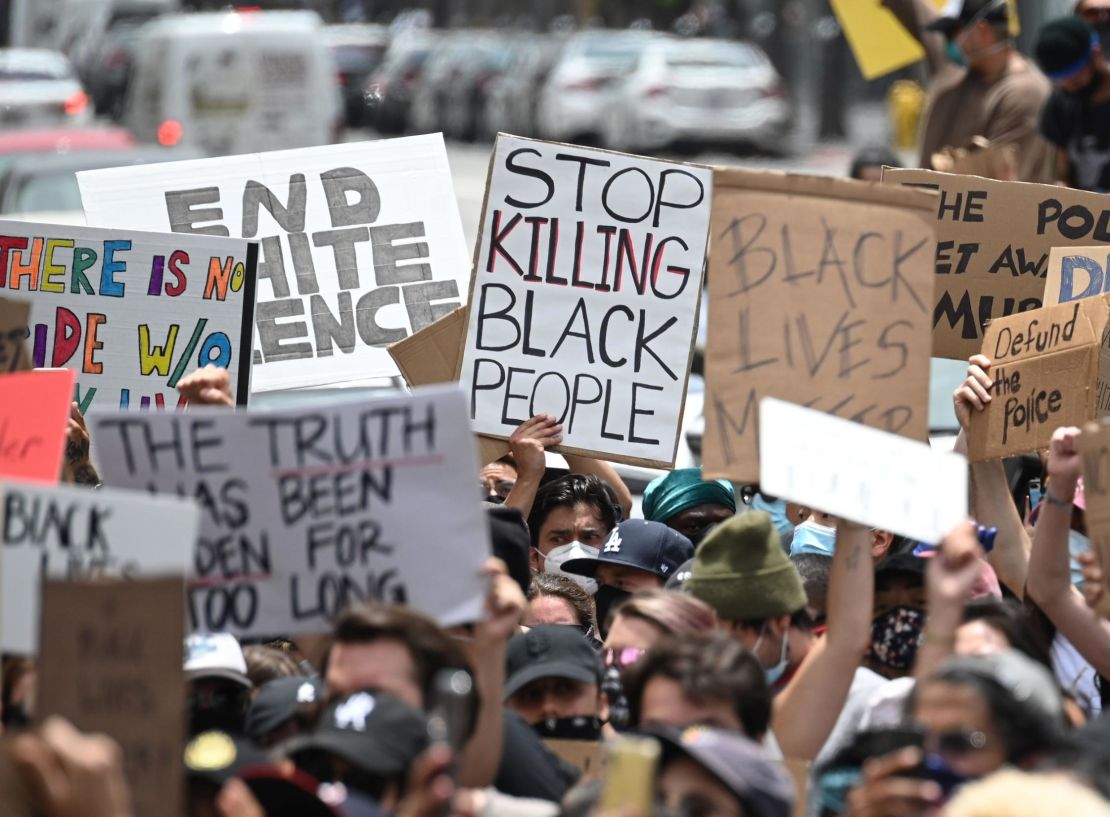
In 2013, the unexpected verdict in the murder trial in the killing of Trayvon Martin, a 17-year-old Black teen who had been walking in his father’s Florida neighborhood, led to the birth of Black Lives Matter – one of the most well-known organizations fighting for the well-being of Black people.
What started as a hashtag became a website, an organization and later grew into more than a dozen local chapters across the US and Canada. They were driven by the series of deaths of Black Americans at the hands of police and vigilantes.
According to the BLM website, its mission is “to eradicate white supremacy and build local power to intervene in violence inflicted on Black communities by the state and vigilantes.”
But BLM’s goal isn’t just about protesting police brutality. At the local level, the organization advocates for mutual aid, defunding police and access to housing and health care for Black and brown workers.
“We live in a country built to keep us away from these resources that we need,” says Kailee Scales, managing director of the Black Lives Matter Global Network. “Folks in the movement have been consistently fighting to reverse that trend, to raise awareness that this is not the way we’re supposed to live.”
Studies show that segregation persists in many American cities, leaving majority Black neighborhoods behind. Black communities don’t have the same access as Whites to health care, quality education, good jobs and other resources.
“You know, for many of us in this country, we know what it is to be treated differently. And we also know what it is to be told that all of the things we experience every single day don’t exist or that if they do exist that it’s our fault (and) that we somehow created the conditions of inequality,” said Alicia Garza, who co-founded the Black Lives Matter Global Network with Patrisse Cullors and Opal Tometi.
In the wake of Floyd’s killing last summer, large crowds took to the streets in multiple cities in solidarity with Black Lives Matter. The protests were bigger and more sustained. The BLM signs that popped up in many people’s yards were just the first signs of a nationwide racial reckoning.
People marched against police violence, systemic racism, to be seen and heard.
“If you don’t speak up and don’t say anything, you’re just like the officers that stood by and watched,” Randy Fikki, a protester in Kansas City, told CNN affiliate WDAF-TV, referring to the officers involved in Floyd’s death.
Critics have responded to the phrase “Black Lives Matter” by coining their own slogans, such as “All Lives Matter,” which some argue minimizes the current struggle Black people face against systemic racism, and “Blue Lives Matter,” referring to the lives of police.
Last week, Trump supporters were criticized on social media after using another phrase that has been known as a racial justice call for years.
They used the hashtag #SayHerName when referring to Ashli Babbitt, a 35-year-old White woman who was fatally shot as the mob tried to force its way toward the House floor.
They appeared to be oblivious to the #SayHerName campaign, which aims to raise awareness of the Black women and girls who fall victim to police brutality – and who are often overlooked and forgotten.
The campaign, launched in 2014 by the African American Policy Forum and Center for Intersectionality and Social Policy Studies, has worked to highlight the cases of dozens of Black women, including Atatiana Jefferson and Michelle Cusseaux, both killed by police in their homes.





